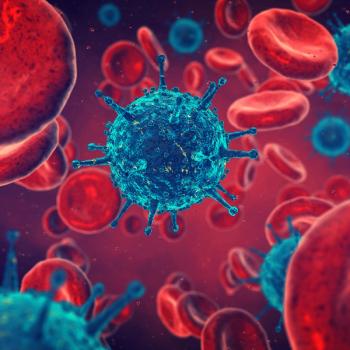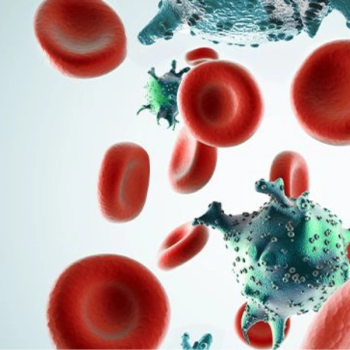
MPN
Latest News
Video Series

Latest Videos
Podcasts
More News

Stage 1 polycythemia vera is manageable with monitoring, phlebotomy, medication and lifestyle changes, allowing patients to live healthy, normal lives.

The phase 2 SANRECO study has recently completed enrollment and will evaluate divesiran, a potential therapy for patients with polycythemia vera.

In a recent interview with CURE, Nona Baker shared insights from her blood cancer journey that began more than 30 years ago.

October brought developments in the management of blood cancers, from early-stage multiple myeloma to new cellular therapies and novel drug designations.

Dr. Francesca Palandri discusses anemia in myelofibrosis, its impact on survival and quality of life, and the potential of Ojjaara for patients.

Supportive care with ESAs or danazol alongside Jakafi helps myelofibrosis patients with anemia manage symptoms and maintain effective treatment doses.

Patients living with myelofibrosis who also experience anemia may see meaningful improvements in blood counts when treated with Vonjo.

Recent clinical trial results, real-world safety data, and patient experiences highlight meaningful advances in blood cancer care.

Dr. Prithviraj Bose explains how doctors tailor myelofibrosis treatments and how patients can work with their care teams to navigate options.

For patients with myelofibrosis, there is a risk of non-melanoma skin cancer or shingles among patients who received long-term treatment with Jakafi.

The FDA has granted rusfertide breakthrough therapy designation for patients with polycythemia vera, a step that could speed its path to approval.

Several oncology companies announced key trial milestones this week across the landscape of both blood cancers and solid tumors.

A structured nurse-led clinic can help patients with myeloproliferative neoplasms receive timely support, as well as bridge gaps in symptom reporting.

Intensive chemotherapy improved survival in patients with accelerated and blast phase myeloproliferative neoplasms, with Venclexta showing no clear benefit.

Long-term follow-up data from the phase 3 MANIFEST 2 clinical trial have been revealed.

As July concludes, the landscape of hematologic oncology continues to evolve, with notable progress in multiple myeloma, myelofibrosis, and CLL.

Cytopenia at myelofibrosis diagnosis raises risk of acute myeloid leukemia and lowers survival, highlighting the need for tailored treatment strategies.

Patients with blood cancers like polycythemia vera, a kind of myeloproliferative neoplasm, may benefit in learning more about recent data from ASCO 2025.

The FDA granted fast track designation to nuvisertib for those with intermediate or high-risk myelofibrosis, which demonstrated symptom relief in patients.

Treatment with the investigational therapeutic rusfertide has proven to be a potential treatment option for patients with polycythemia vera.

The VERIFY trial explores rusfertide to manage polycythemia vera without causing iron deficiency symptoms, Dr. Aaron Gerds explained.

Katherine has an exquisite instinct for understanding that there is a context to each patient’s diagnosis that is just as important to understand.

A patient and provider share updates on pelabresib plus Rituxan treatment, which met the MANIFEST-2 trial's primary end point for those with myelofibrosis.

Dr. Tiziano Barbui explains how excess blood cell production in certain myeloproliferative neoplasms can impair circulation and why treatments like phlebotomy are used.

JAK inhibitors ease symptoms in myelofibrosis, but only stem cell transplant offers a cure; newer drugs aim to fill unmet needs, especially for anemia.





















